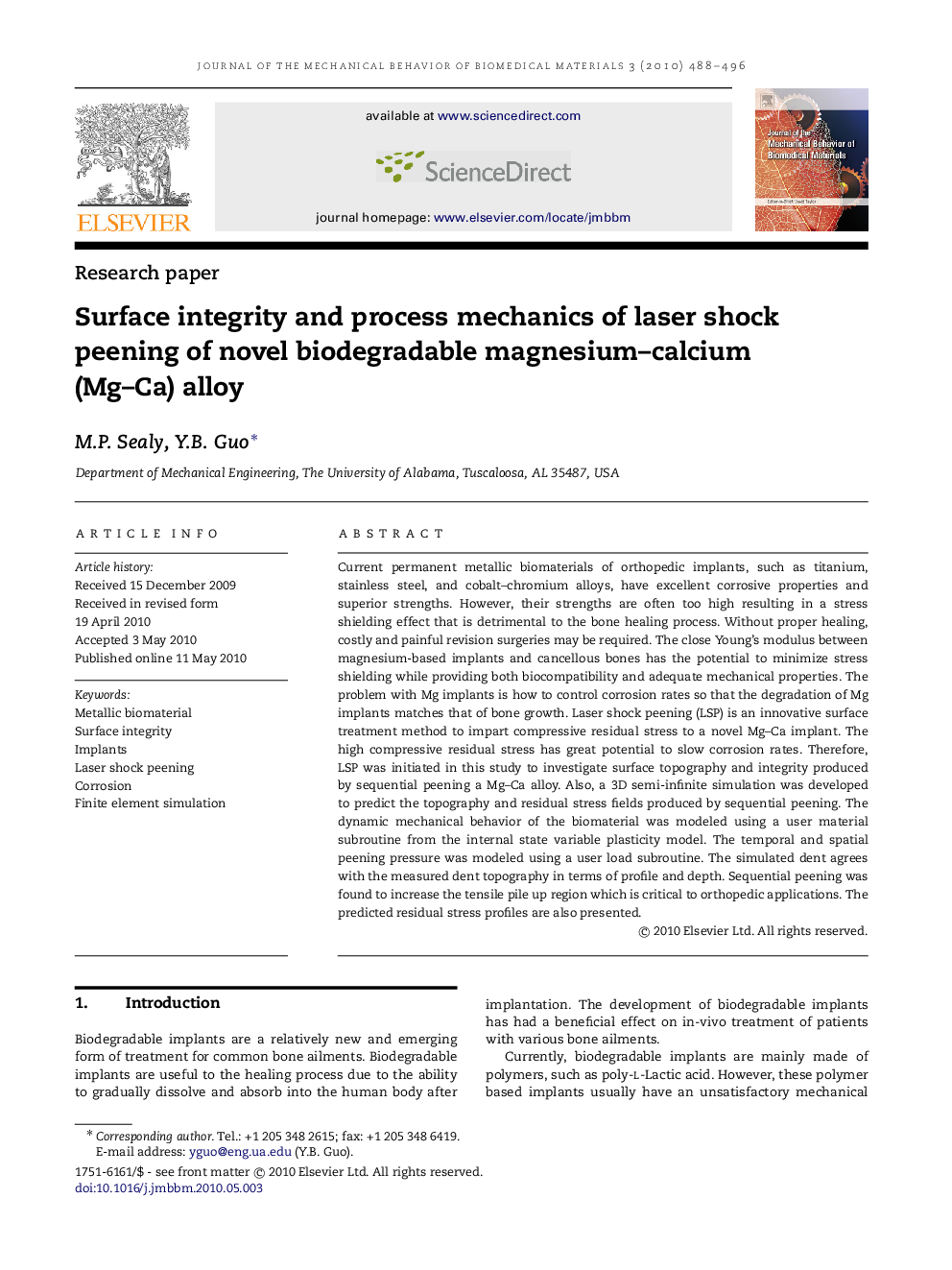| Article ID | Journal | Published Year | Pages | File Type |
|---|---|---|---|---|
| 811235 | Journal of the Mechanical Behavior of Biomedical Materials | 2010 | 9 Pages |
Current permanent metallic biomaterials of orthopedic implants, such as titanium, stainless steel, and cobalt–chromium alloys, have excellent corrosive properties and superior strengths. However, their strengths are often too high resulting in a stress shielding effect that is detrimental to the bone healing process. Without proper healing, costly and painful revision surgeries may be required. The close Young’s modulus between magnesium-based implants and cancellous bones has the potential to minimize stress shielding while providing both biocompatibility and adequate mechanical properties. The problem with Mg implants is how to control corrosion rates so that the degradation of Mg implants matches that of bone growth. Laser shock peening (LSP) is an innovative surface treatment method to impart compressive residual stress to a novel Mg–Ca implant. The high compressive residual stress has great potential to slow corrosion rates. Therefore, LSP was initiated in this study to investigate surface topography and integrity produced by sequential peening a Mg–Ca alloy. Also, a 3D semi-infinite simulation was developed to predict the topography and residual stress fields produced by sequential peening. The dynamic mechanical behavior of the biomaterial was modeled using a user material subroutine from the internal state variable plasticity model. The temporal and spatial peening pressure was modeled using a user load subroutine. The simulated dent agrees with the measured dent topography in terms of profile and depth. Sequential peening was found to increase the tensile pile up region which is critical to orthopedic applications. The predicted residual stress profiles are also presented.
